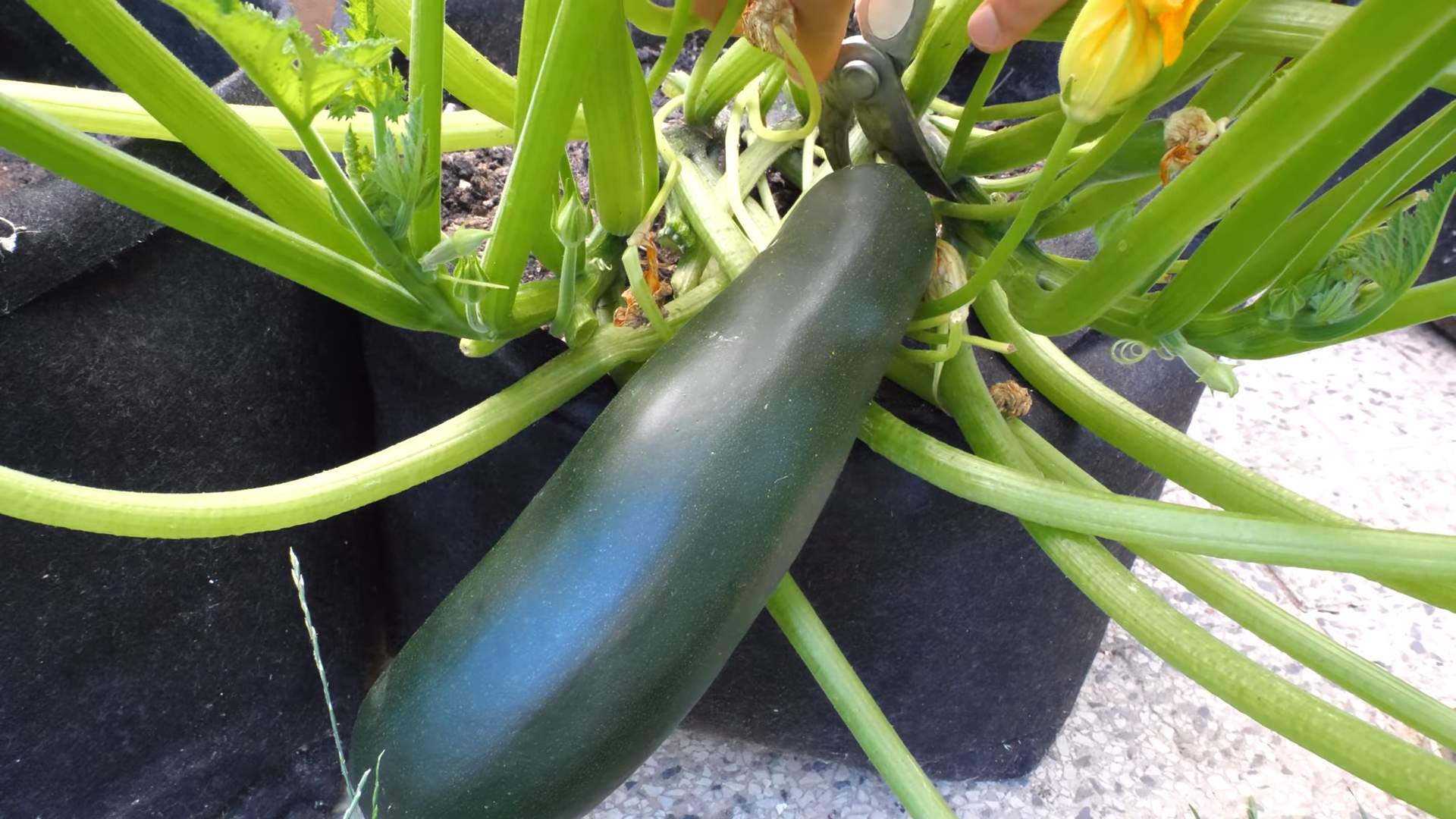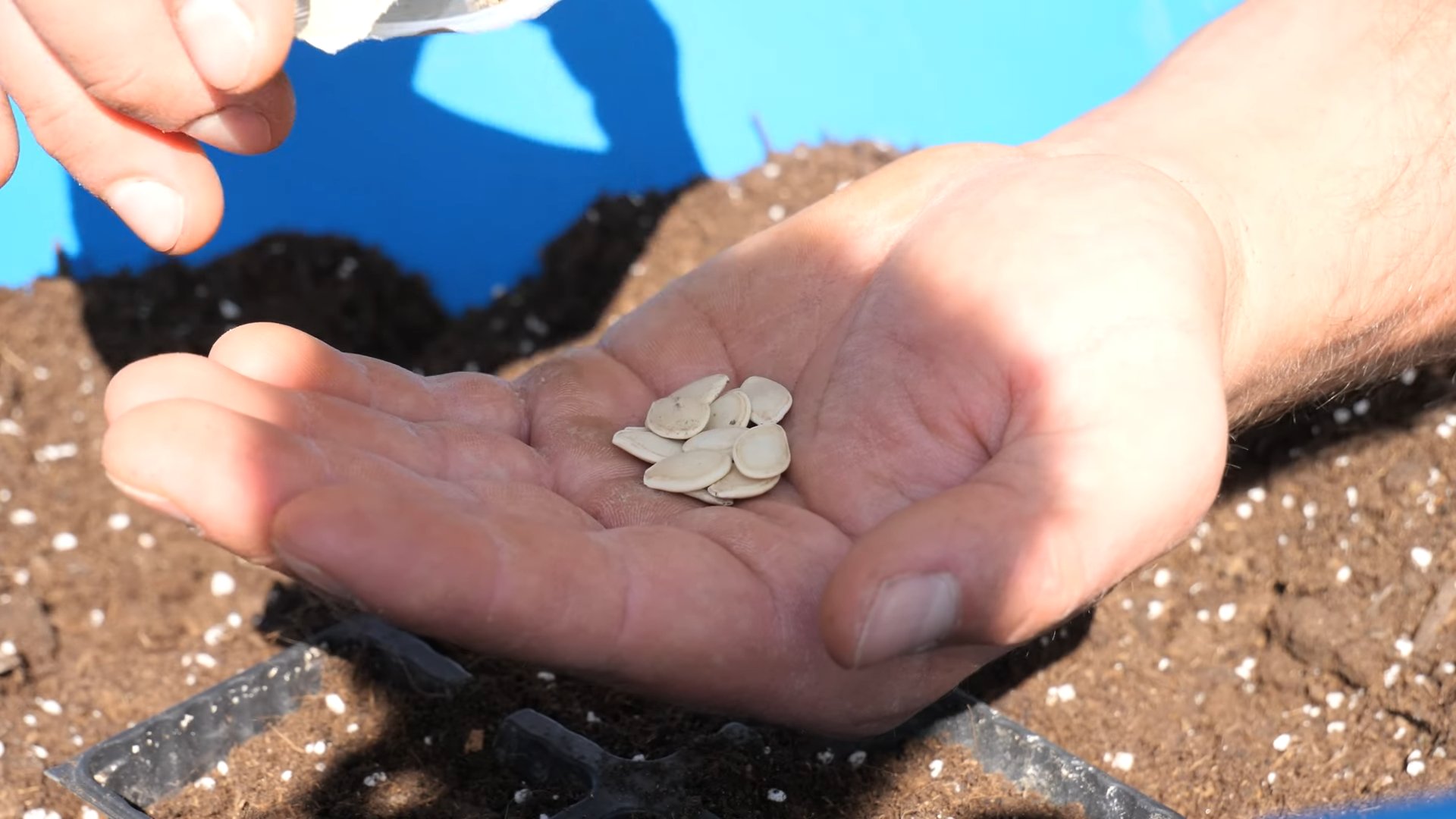Growing Zucchini at Home can feel like hitting the jackpot in your garden! Imagine baskets overflowing with fresh, vibrant zucchini, ready for everything from delicious zucchini bread to savory summer stir-fries. But let’s be honest, sometimes getting those prolific yields can feel more like a gamble than a sure thing. Have you ever wondered why your neighbor’s zucchini plants are bursting with fruit while yours are… well, just existing?
Zucchini, a member of the squash family, has a fascinating history. Originating in the Americas, it wasn’t until Italian immigrants brought it to Europe that the zucchini we know and love today truly flourished. It quickly became a staple in Mediterranean cuisine, celebrated for its versatility and nutritional value. For centuries, gardeners have sought the secrets to maximizing their zucchini harvest, passing down tips and tricks from generation to generation.
That’s where this DIY guide comes in! I’m here to share some simple yet effective hacks that will transform your growing zucchini at home experience. We’ll dive into everything from soil preparation and pollination techniques to pest control and harvesting strategies. These aren’t just random tips; they’re tried-and-true methods that I’ve personally used to achieve zucchini abundance. Whether you’re a seasoned gardener or just starting out, these DIY tricks will empower you to cultivate a thriving zucchini patch and enjoy a summer filled with delicious, homegrown goodness. Let’s get started!

Growing Zucchini at Home: A Beginner’s Guide
Okay, so you want to grow zucchini? Awesome! It’s a fantastic choice for beginner gardeners because it’s relatively easy to grow and incredibly prolific. Seriously, one plant can give you more zucchini than you know what to do with! I’m going to walk you through everything you need to know, from choosing the right spot to dealing with common problems. Let’s get started!
Choosing the Right Variety
First things first, let’s talk zucchini varieties. You might think zucchini is just zucchini, but there’s actually a surprising amount of variation. Here’s a quick rundown of some popular choices:
* Black Beauty: This is probably the most common variety. It’s a classic dark green zucchini with a mild flavor.
* Golden Zucchini: As the name suggests, this one is bright yellow. It has a slightly sweeter flavor than the green varieties.
* Costata Romanesco: This Italian heirloom variety has distinctive ridges and a nutty flavor. It’s a bit more expensive, but worth it if you’re looking for something special.
* Round Zucchini (Eight Ball, One Ball): These are fun to grow and perfect for stuffing. They’re also great for grilling.
Consider your space and your taste preferences when choosing a variety. If you have limited space, look for bush varieties, which are more compact than vining varieties.
Preparing Your Garden Bed
Zucchini plants are hungry and thirsty, so preparing your garden bed properly is crucial for success. Here’s what I recommend:
* Sunlight: Zucchini needs at least 6-8 hours of direct sunlight per day. Choose a spot in your garden that gets plenty of sun.
* Soil: Zucchini prefers well-drained soil that is rich in organic matter. If your soil is heavy clay or sandy, amend it with compost or well-rotted manure.
* Soil pH: The ideal soil pH for zucchini is between 6.0 and 7.5. You can test your soil pH with a soil testing kit. If your soil is too acidic, add lime to raise the pH. If it’s too alkaline, add sulfur to lower the pH.
* Spacing: Zucchini plants need plenty of space to grow. Space bush varieties about 2-3 feet apart and vining varieties about 3-4 feet apart.
Planting Your Zucchini
You can start zucchini seeds indoors or direct sow them in your garden. I usually prefer to direct sow because zucchini grows so quickly.
* Starting Seeds Indoors (Optional): If you want to get a head start, you can start zucchini seeds indoors about 3-4 weeks before the last expected frost. Sow the seeds in peat pots or biodegradable pots to minimize root disturbance when transplanting. Keep the soil moist and warm (around 70-80°F).
* Direct Sowing: Wait until the soil has warmed up to at least 60°F before direct sowing zucchini seeds. Sow the seeds about 1 inch deep and 2-3 inches apart. Once the seedlings emerge, thin them to the strongest plant every 2-3 feet.
* Transplanting Seedlings: If you started your seeds indoors, harden them off for a week before transplanting them into your garden. Hardening off means gradually exposing the seedlings to outdoor conditions. Start by placing them in a sheltered spot for a few hours each day, gradually increasing the amount of time they spend outdoors.
Caring for Your Zucchini Plants
Once your zucchini plants are in the ground, they’ll need regular care to thrive. Here’s what you need to do:
* Watering: Zucchini plants need consistent moisture, especially during hot, dry weather. Water deeply and regularly, aiming for about 1 inch of water per week. Avoid overhead watering, which can lead to fungal diseases. Drip irrigation or soaker hoses are ideal.
* Fertilizing: Zucchini plants are heavy feeders, so they need regular fertilization. Apply a balanced fertilizer (e.g., 10-10-10) every 2-3 weeks. You can also side-dress your plants with compost or well-rotted manure.
* Mulching: Mulching helps to retain moisture, suppress weeds, and regulate soil temperature. Apply a layer of organic mulch, such as straw, wood chips, or shredded leaves, around your zucchini plants.
* Weeding: Keep your garden bed free of weeds, which can compete with your zucchini plants for nutrients and water. Hand-pull weeds regularly or use a hoe to cultivate the soil.
* Pollination: Zucchini plants have separate male and female flowers. The female flowers need to be pollinated in order to produce fruit. Bees are the primary pollinators, but you can also hand-pollinate your zucchini flowers if necessary. To hand-pollinate, use a small paintbrush to transfer pollen from the male flower to the female flower. You can identify the female flowers by the small zucchini fruit at the base of the flower.
Dealing with Pests and Diseases
Zucchini plants are generally pest-resistant, but they can be susceptible to certain pests and diseases. Here are some common problems and how to deal with them:
* Squash Vine Borers: These pests can tunnel into the stems of zucchini plants, causing them to wilt and die. To prevent squash vine borers, wrap the base of your plants with aluminum foil or netting. You can also inject Bacillus thuringiensis (Bt) into the stems to kill the borers.
* Squash Bugs: These pests suck the sap from zucchini leaves, causing them to turn yellow and brown. Hand-pick squash bugs off your plants or spray them with insecticidal soap.
* Powdery Mildew: This fungal disease causes a white, powdery coating on zucchini leaves. To prevent powdery mildew, provide good air circulation and avoid overhead watering. You can also spray your plants with a fungicide.
* Blossom End Rot: This condition causes the blossom end of the zucchini fruit to rot. Blossom end rot is usually caused by calcium deficiency or inconsistent watering. To prevent blossom end rot, ensure your soil is rich in calcium and water your plants regularly.
Harvesting Your Zucchini
Zucchini grows quickly, so you’ll need to harvest it regularly. Here’s what you need to know:
* When to Harvest: Harvest zucchini when it’s young and tender, usually when it’s about 6-8 inches long. Overripe zucchini can be tough and seedy.
* How to Harvest: Use a sharp knife or pruning shears to cut the zucchini from the plant. Be careful not to damage the plant.
* Storage: Store zucchini in the refrigerator for up to a week. You can also freeze zucchini for longer storage. To freeze zucchini, blanch it in boiling water for 2-3 minutes, then cool it in ice water. Drain the zucchini and pack it into freezer bags or containers.
Troubleshooting Common Zucchini Problems
Sometimes, even with the best care, things can go wrong. Here are a few common zucchini problems and how to fix them:
* No Fruit Production: If your zucchini plants are producing flowers but no fruit, it could be due to a lack of pollination. Make sure there are plenty of bees in your garden. You can also hand-pollinate your zucchini flowers. Another reason could be that the plant is stressed due to lack of water or nutrients.
* Yellowing Leaves: Yellowing leaves can be a sign of nutrient deficiency, pest infestation, or disease. Check your plants for pests and diseases and fertilize them if necessary.
* Wilting Leaves: Wilting leaves can be a sign of underwatering, squash vine borers, or root rot. Water your plants deeply and check them for squash vine borers. If you suspect root rot, improve drainage in your garden bed.
Enjoying Your Harvest
Now for the best part: enjoying your homegrown zucchini! There are endless ways to use zucchini in your cooking. Here are a few ideas:
* Grilled Zucchini: Slice zucchini lengthwise and grill it with olive oil, salt, and pepper.
* Zucchini Bread: Grate zucchini and add it to your favorite bread recipe.
* Zucchini Noodles (Zoodles): Use a spiralizer to turn zucchini into noodles. Serve them with your favorite sauce.
* Stuffed Zucchini: Hollow out zucchini and fill it with a mixture of ground meat, rice, and vegetables.
* Zucchini Fritters: Grate zucchini and mix it with flour, eggs, and cheese. Fry the mixture in oil until golden brown.
Growing zucchini is a rewarding experience. With a little bit of care and attention, you can enjoy a bountiful harvest of fresh, delicious zucchini all summer long. Happy gardening!

Conclusion
So, there you have it! Growing zucchini at home is not only achievable, even for novice gardeners, but it’s also incredibly rewarding. Imagine stepping out into your backyard and harvesting fresh, vibrant zucchini whenever you need it. Forget those bland, overpriced vegetables from the supermarket; homegrown zucchini bursts with flavor and nutrients, ready to be transformed into delicious meals.
This isn’t just about saving money, although that’s certainly a perk. It’s about connecting with nature, understanding where your food comes from, and enjoying the satisfaction of nurturing something from seed to table. Plus, the sheer abundance of zucchini you’ll likely harvest means you’ll have plenty to share with friends, family, and neighbors – spreading the joy of homegrown goodness.
But the real reason this DIY trick is a must-try? It’s the unparalleled freshness and flavor. Commercially grown zucchini often travels long distances and sits on shelves, losing its peak taste and texture. When you grow your own, you can harvest it at its prime, ensuring the most delicious and nutritious zucchini possible. Think of the possibilities: zucchini bread that’s moist and flavorful, grilled zucchini with a smoky char, or even zucchini noodles tossed in your favorite sauce.
Ready to take your zucchini game to the next level? Consider experimenting with different varieties. While the classic dark green zucchini is a staple, there are also yellow zucchini, round zucchini, and even striped varieties to add visual interest to your garden and your plate. You can also try companion planting to improve your zucchini’s growth. Marigolds, for example, can help deter pests, while beans can help fix nitrogen in the soil.
Don’t be intimidated by the thought of gardening. Growing zucchini is surprisingly easy, and with a little bit of care and attention, you’ll be rewarded with a bountiful harvest. Remember to choose a sunny spot, provide well-drained soil, and water regularly. And don’t forget to keep an eye out for pests and diseases.
We’re confident that you’ll find growing zucchini at home to be a fun, fulfilling, and delicious experience. So, grab some seeds, get your hands dirty, and prepare to be amazed by the abundance of your own backyard garden.
We’d love to hear about your experiences! Share your tips, tricks, and zucchini recipes in the comments below. Let’s create a community of zucchini enthusiasts and inspire others to embrace the joy of homegrown goodness. What are you waiting for? Start growing zucchini today!
Frequently Asked Questions (FAQ)
What is the best time to start growing zucchini?
The best time to start growing zucchini depends on your climate. In most regions, you can start seeds indoors 3-4 weeks before the last expected frost. Once the danger of frost has passed and the soil has warmed up, you can transplant the seedlings outdoors. Alternatively, you can direct sow zucchini seeds directly into the garden after the last frost. Make sure the soil temperature is consistently above 60°F (15°C) for optimal germination. In warmer climates, you can often plant zucchini multiple times throughout the growing season for a continuous harvest.
How much space does a zucchini plant need?
Zucchini plants are relatively large and need ample space to grow. Each plant typically requires 2-3 feet of space in all directions. If you’re planting in rows, space the rows 3-4 feet apart. This allows for adequate air circulation, which helps prevent fungal diseases. If you’re growing zucchini in containers, choose a large pot that is at least 18 inches in diameter and 18 inches deep. Remember that container-grown plants may need more frequent watering and fertilization than those grown in the ground.
What kind of soil is best for growing zucchini?
Zucchini plants thrive in well-drained, fertile soil that is rich in organic matter. Before planting, amend the soil with compost, aged manure, or other organic materials to improve its structure and nutrient content. Zucchini prefers a slightly acidic to neutral soil pH, ideally between 6.0 and 7.5. You can test your soil pH using a home testing kit or by sending a sample to a local agricultural extension office. If your soil is heavy clay, consider adding sand or other amendments to improve drainage.
How often should I water my zucchini plants?
Zucchini plants need consistent moisture, especially during hot, dry weather. Water deeply and regularly, aiming to keep the soil consistently moist but not waterlogged. Water at the base of the plant to avoid wetting the foliage, which can increase the risk of fungal diseases. A good rule of thumb is to water when the top inch of soil feels dry to the touch. Mulching around the plants can help retain moisture and suppress weeds. During periods of heavy rain, you may need to reduce watering to prevent root rot.
What are some common pests and diseases that affect zucchini plants?
Zucchini plants are susceptible to several pests and diseases, including squash vine borers, squash bugs, aphids, powdery mildew, and blossom end rot. Squash vine borers are particularly destructive, as they tunnel into the stems of the plants and can cause them to wilt and die. Inspect your plants regularly for signs of pests and diseases, and take action promptly to prevent them from spreading. You can use insecticidal soap or neem oil to control aphids and squash bugs. For squash vine borers, you can try wrapping the stems of the plants with aluminum foil or using row covers to prevent the moths from laying eggs. Powdery mildew can be prevented by ensuring good air circulation and avoiding overhead watering. Blossom end rot is caused by a calcium deficiency and can be prevented by ensuring that the soil is properly amended with calcium and that the plants are watered consistently.
How do I know when my zucchini is ready to harvest?
Zucchini is best harvested when it is young and tender, typically when it is 6-8 inches long. Larger zucchini can become tough and seedy. To harvest, simply cut the zucchini from the plant using a sharp knife or pruning shears. Be careful not to damage the plant. Regular harvesting encourages the plant to produce more fruit. Check your plants frequently, as zucchini can grow very quickly, especially during warm weather.
Can I eat zucchini blossoms?
Yes, zucchini blossoms are edible and can be a delicious addition to your meals. They can be stuffed, fried, or added to salads. Harvest the blossoms in the morning, when they are fresh and open. Choose male blossoms, which do not produce fruit, to avoid reducing your zucchini harvest. To prepare the blossoms, gently rinse them and remove the stamen.
How can I store zucchini?
Zucchini can be stored in the refrigerator for up to a week. Wrap it loosely in plastic wrap or store it in a perforated plastic bag. For longer storage, you can freeze zucchini. Shred or slice the zucchini and blanch it in boiling water for 1-2 minutes. Then, cool it quickly in ice water and drain well. Pack the zucchini into freezer bags or containers and freeze. Frozen zucchini can be used in soups, stews, and baked goods. You can also pickle or can zucchini for longer-term storage.
What can I do with an overabundance of zucchini?
If you find yourself with an overabundance of zucchini, don’t worry! There are many ways to use it up. You can make zucchini bread, zucchini muffins, zucchini fritters, zucchini noodles, zucchini soup, or zucchini relish. You can also shred zucchini and freeze it for later use in baked goods. Share your zucchini with friends, family, and neighbors, or donate it to a local food bank. Get creative and experiment with different zucchini recipes to find your favorites.




Leave a Comment